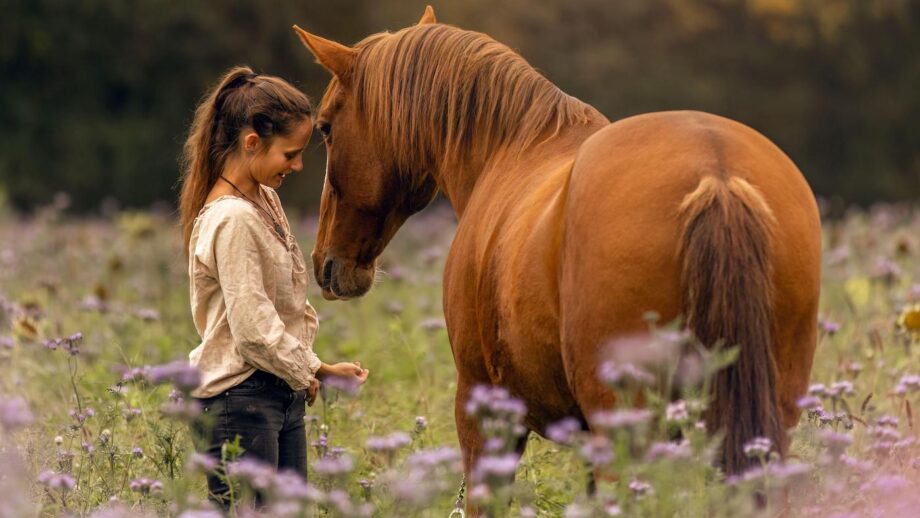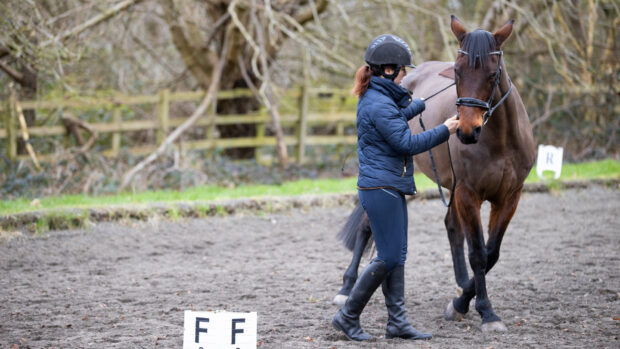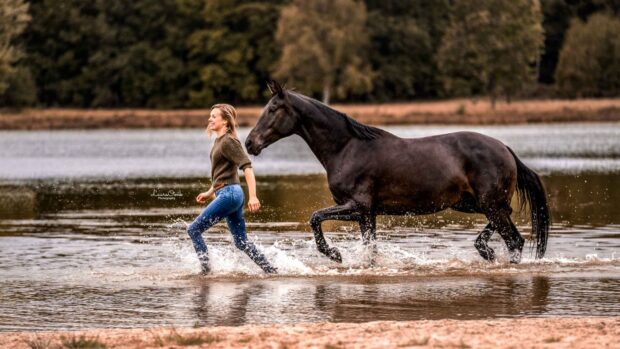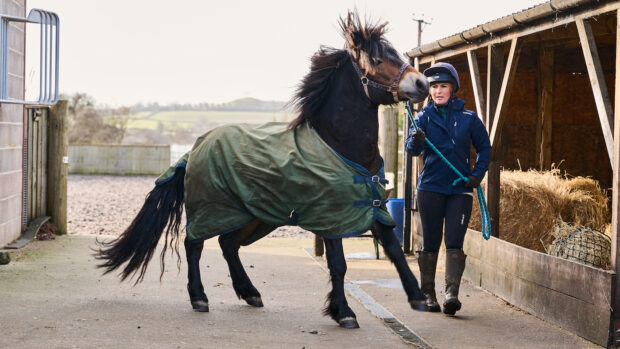If you’re tired of your horse leading you a merry dance round the field while you stand helplessly, headcollar in hand, the chances are you need to go back to basics. Alas, it’s rarely simple as finding magical groundwork exercises for catching horses in an instant, but you can build foundations on the ground that should increase the likelihood that he will come up to you in the field.
We asked Tik Maynard, international event rider, author and a leading voice in equine behaviour, to share three simple techniques to practise with your horse. As Tik explains, “I don’t want to have to catch my horse, I want them trying to catch me.”
According to Tik, there are two main reasons why horses can be hard to catch.
“Some never really overcome their fear around people, so they always worry about someone coming into their space,” he says.
Other horses aren’t fearful, but they’re smart, realising life is easier in the paddock. Tik explains: “If, when you catch your horse, you immediately make life hard by dragging them in and putting them straight to work, they’ll quickly learn to avoid being caught. Each time this happens, it reinforces the habit.
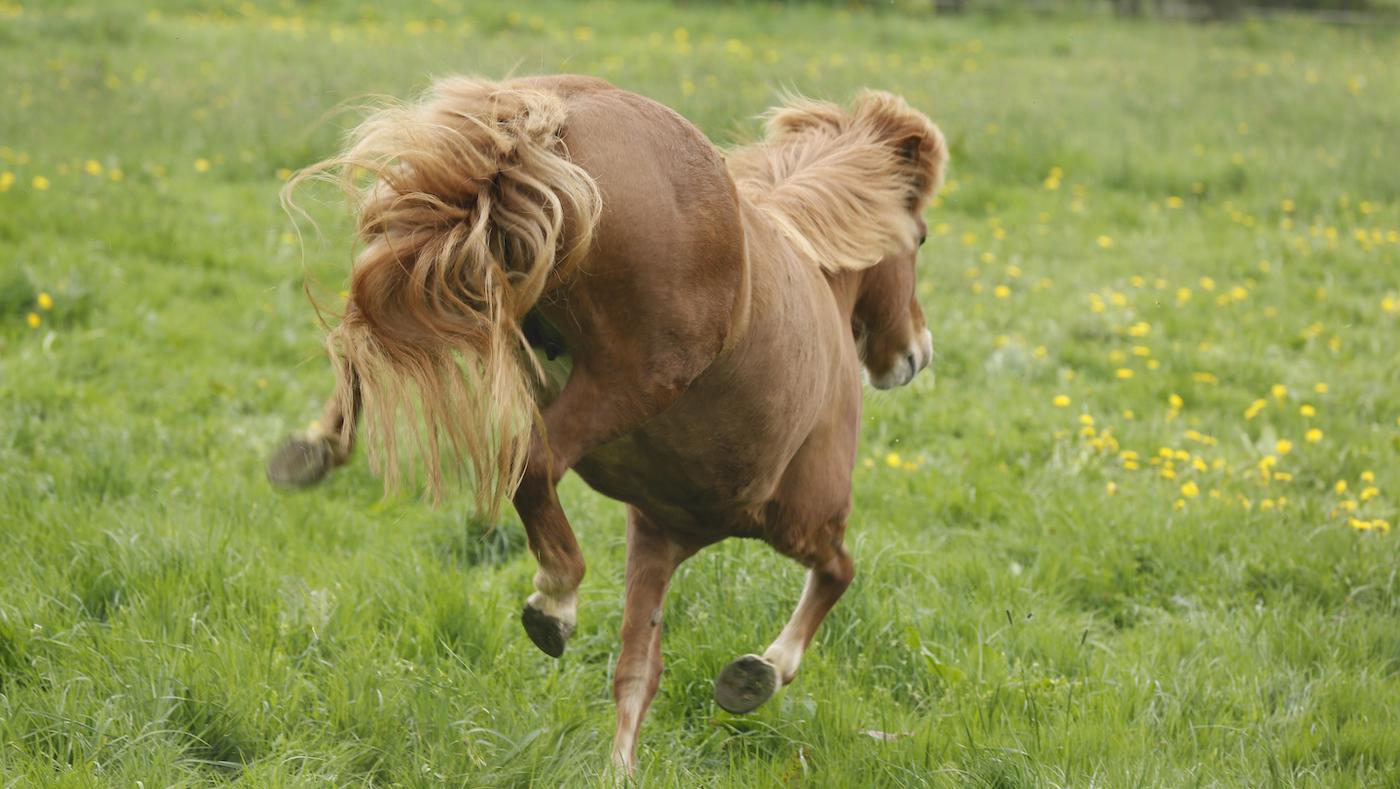
Some horses are inherently fearful of humans, while others realise life’s easier in the paddock. Credit: Alamy
“Approaching your horse needs to be the opposite of how you might greet another human,” explains Tik. “With a friend you haven’t seen for a while, you might run straight towards each other, immediately touching.
“With horses, you need to think differently. If you face them head-on, leaning forward to touch, that’s predatory behaviour.”
Set yourself up for success by becoming more self-aware. Practised regularly, the exercises below will improve your connection with your horse, making it easier to catch them.
Groundwork exercises for catching horses
Step 1 – looking for a positive connection
Aim: this exercise aims to recognise and reward even subtle signs of communication.
Start small, ideally in the stable, and always wear a hard hat and suitable footwear.
“The smaller the space, the easier it will be to achieve,” explains Tik.
“Look for a positive connection, however nuanced – an ear flick, a glance towards you or a longer stare – and reward the horse by turning away and stepping back. The more often you notice and reward the horse’s behaviour, the smoother and easier it will be.”
Positive reinforcement enables the horse to move to the next stage.
“Begin by just drawing their eye towards you, rewarding that, and before long they’ll be moving their whole body the same way,” says Tik. “In most cases, you’ll see a massive improvement in a day or two.”

Try to get the horse’s attention and achieve a positive connection, rewarding the horse for looking at you by stepping back. Credit: Madren Photography
“If the horse is looking away, tensing, or turning their back towards you, just turn your body slightly away and wait until they look for an answer.”
But he warns, “Never put yourself in danger. If you’re worried, walk away and seek professional advice.”
Step 2: physical connection
Aim: this exercise aims to build up your horse’s confidence about having you in their space.
Start in the horse’s stable, holding the back of your hand outstretched.
“As soon as they look towards your hand, take a step away and relax your arm,” explains Tik. “Repeat the exercise in stages, so next they stretch their muzzle and almost touch your hand, then you feel their breath or whiskers on your hand, to a point where they eventually touch you.

Offer the back of your hand, and as soon as the horse looks at it, take it away until they are reaching to touch it. Credit: Madren Photography
“As you achieve each stage, back away and relax; that’s the reward that encourages them to keep going.”
Your horse will gain confidence by touching you before you touch them. However, Tik warns, “If you’re too quick to go into a horse’s space, that’s when they’re going to learn to keep leaving you.
“Once your horse regularly touches your fist, build the exercise into your daily routine. The more you practise, the better.”
Step 3: catching your horse
How you catch your horse – and what you do next – is the key to success.
“Become aware of how gently you’re putting the halter over your horse’s ears, then take at least 30 seconds to give them a good feeling about being caught,” advises Tik. “Give them something they enjoy – a rub or a scratch, a feed and a rest.”

Giving the horse a positive, unrushed experience when he comes to you will increase the chances of success. Credit: Alamy
Finally, Tik explains, how you release your horse can affect how easy they will be to catch next time.
“Avoid letting your horse go suddenly by the gate, so they turn their back to you, kick out or gallop off; instead, think about going with them to what they want to do next – roll, drink, eat hay, or greet their friends. Spend time with them there, and always leave them before they leave you.”
So, how long will it take to see a difference if you follow these groundwork exercises for catching horses?
“It depends on how much a horse has learned to leave people and how good your timing is,” says Tik. “The key is to reward small improvements. In around 60% of cases, practising these simple bonding techniques with your horse will make a difference.
“However, some cases are so complex and nuanced that you will need professional help.
“Recognise that every situation is different, every horse unique, and don’t get too frustrated. Keep observing, keep curious, and keep learning.”
To find out more about Tik’s next clinic in the UK, visit Horsemanship Hub.
- If you want to read more expert advice on subjects ranging from groundwork and relationship-building to training advice for specific horse sports, subscribe to the Horse & Hound website
Did you find this article helpful? You may also like to read…

Is your horse too sharp to ride? Try these three-minute groundwork exercises to take off the edge and engage their brain before you get on

‘Be the catalyst for fun in your horse’s life’: Emma Massingale’s expert tips to get a horse to tune in and listen to you

Build your confidence in handling horses on the ground, whether you’re a rider or the vital helping hand

Why do you lack confidence when riding or handling horses? Five questions to ask yourself

‘I only ride her two or three times a week’: the work routine that propelled hot dressage mare to Olympic final
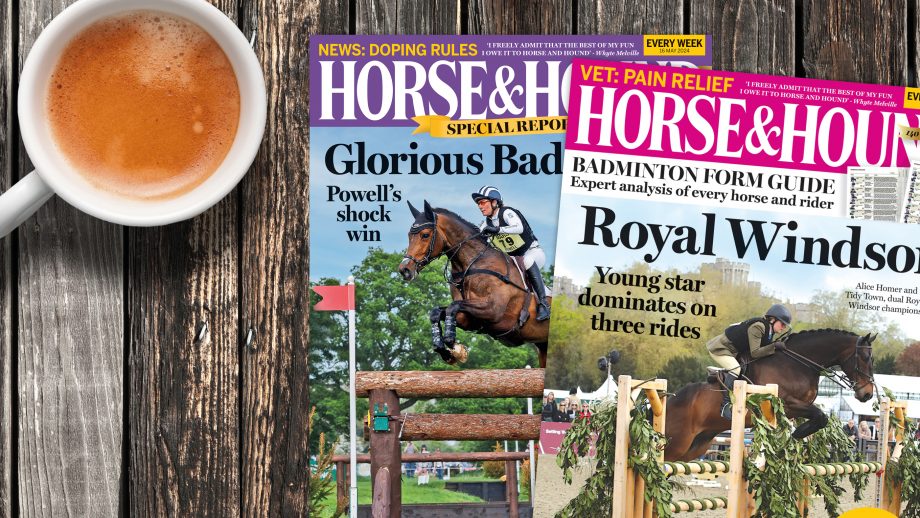
Subscribe to Horse & Hound magazine today – and enjoy unlimited website access all year round

